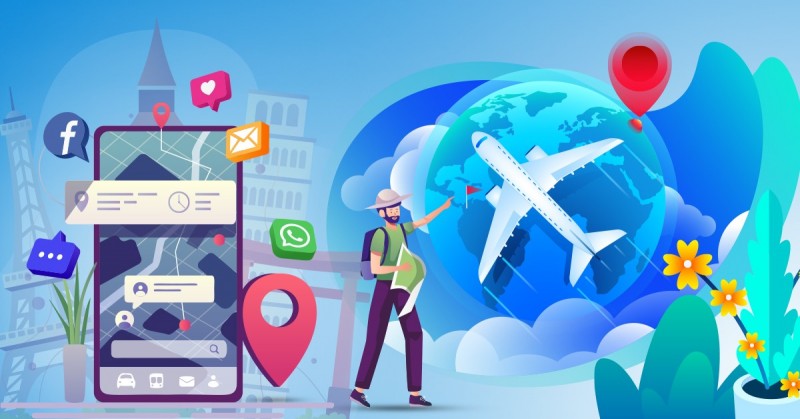
Social media has completely changed how we travel, share our experiences, and do so in the digital age. Travelers may now easily access a wide range of information, connect with others who share their interests, and share their experiences with a large audience by simply clicking a button. Social media has had a significant impact on the travel and tourism sector, changing it in many ways. Here, we explore the numerous facets of this influential change.
Inspiration and aspiration: Social media sites like Instagram, Facebook, and Pinterest act as online trip guides and arouse users' wanderlust. Travelers are inspired to discover new places and undertake once-in-a-lifetime adventures by arresting photos of stunning scenery, opulent resorts, and unusual foods. The wonders of the globe are displayed on social media, inspiring desires to visit places on bucket lists.
Real-Time suggestions: Before the advent of social media, suggestions for travelers came from travel guides and tour operators. Social media today makes it possible to share experiences and insights instantly. Travelers can get trustworthy testimonials and advice from other adventurers, assisting them in planning their excursions. These recommendations encourage a sense of community and camaraderie among tourists and are frequently more reliable than conventional ads.
Instantaneous communication: Travelers and destinations now have more of a connection thanks to social media platforms. Travelers may now speak directly with hotels, airlines, and tour companies to ask questions and get answers. A continuous journey from planning to execution is made possible by this real-time communication, which also improves customer service and enriches the trip experience.
Digital influencers and influencer marketing: The emergence of digital influencers, or people with significant social media followings, has completely changed the travel marketing scene. Influencers talk about their travels while marketing places to go, places to stay, and travel-related goods to their audience. Influencer marketing is used by travel firms to engage with a larger audience and develop unique relationships with potential customers.
Immersive content and virtual reality: Virtual reality (VR) and 360-degree videos on social media platforms let visitors experience places before actually going there. Travelers may make informed decisions and set reasonable expectations thanks to the immersive previews provided by VR tours of hotels, attractions, and scenic locations.
Tourism promotion and destination marketing: Tourism boards and organizations that specialize in destination marketing actively promote their regions on social media. In order to highlight the distinctive features of a destination and entice visitors to explore and share their own experiences, engaging content, alluring photos, and user-generated content (UGC) are shared.
Crowdsourcing & Itinerary Planning: Using social media, visitors can ask their friends and followers for recommendations on their itineraries. They ask for recommendations on must-see locations, undiscovered jewels, and off-the-beaten-path experiences, which enhances their trip plans with a variety of viewpoints.
Advocacy for Sustainable Tourism: Social media is a key tool for promoting ethical travel and sustainable tourism practices. Users promote environmental protection, ethical travel, and helping local people. Influencers who promote sustainable travel exhort visitors to tread softly and leave a constructive mark on the places they visit.
The Power of Language: Improving Your Career and Communication Skills
The Best Tourist Destinations in India for Students: An Educational Odyssey